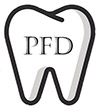Biopsy and Soft Tissue Lesion Removal
While dentistry has a focus on the gums and teeth, it also includes other parts of the mouth including the tongue, the soft and hard palates and the lips as well as the temporomandibular joint and glands and skin of the neck. Certain diseases of the body can often be detected through the mouth, which is another reason why regular dental care is so important.
Oral Abnormalities
Dentists will always look for signs of oral cancer because early detection can increase the chances for survival. The mouth can contain other growths that are usually benign but must always be investigated.
- Fibromas. These are masses inside the mouth that feel like lumps.
- Lichen planus. This is an inflammation that can be uncomfortable.
- Leukoplakia. This condition causes the growth of white patches in the mouth. The lesions are typically benign but are biopsied to ensure they are not pre-cancerous.
- Pregnancy tumors. The hormonal changes that occur with pregnancy can bring on red swollen areas in the mouth.
Heart problems, Crohn’s disease and diabetes can present with oral symptoms, and dentists are always looking carefully for signs of these illnesses.
Biopsies
While nearly all mouth lesions are benign, if there is any chance of cancer being present, a biopsy will be done. Whether the procedure is done in the office or a hospital depends on the amount of tissue that needs to be taken. The patient will only need a local anesthetic and if any incisions have to be made, they will be closed with dissolving sutures. Patients may experience some bleeding afterward and should rest and continue with their usual oral healthcare routine. The results of the biopsy are available a few days after the surgery.
Never assume a lesion or lump in the mouth is harmless and will go away on its own. Only a dentist and possibly a biopsy can give a correct diagnosis.

